赫妹跷脚牛肉(红星街店)
5.0/5
8 Reviews
No. 7 of Local Restaurants in Panzhihua
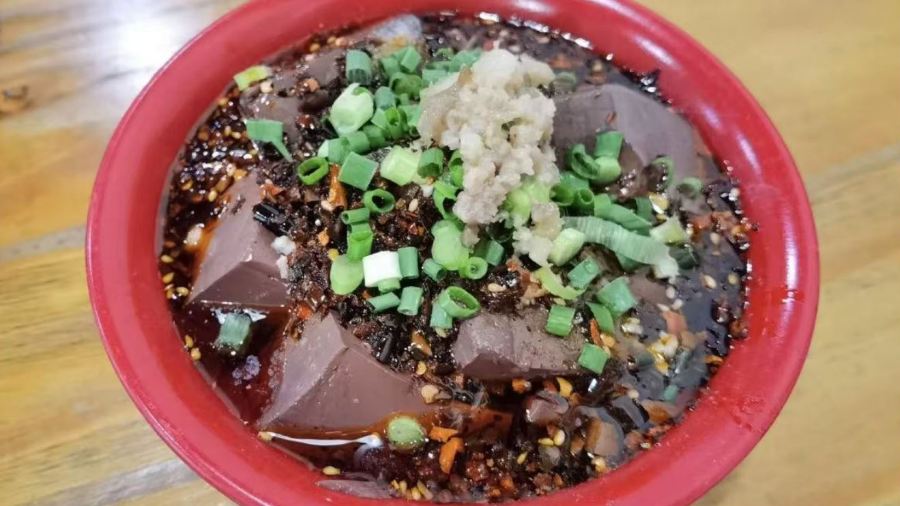


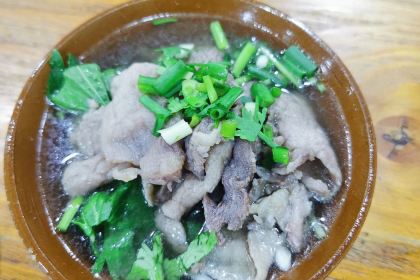
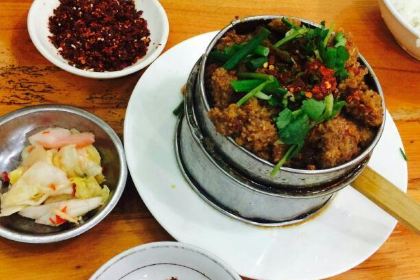
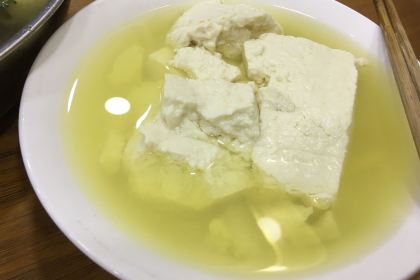
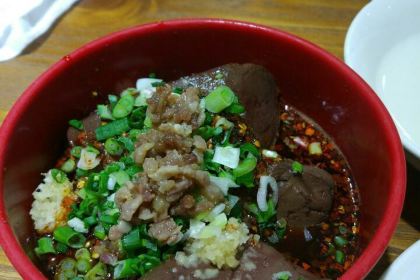
More
Open Now|11:00-15:00Show more
+8618608121982
No. 62 Rongshu Street (500 meters down from bus stop 32, turn right)
 红色准确Cross-legged beef is a city-level intangible cultural heritage of Leshan. It is an indispensable delicacy in the streets and alleys of Leshan. Cross-legged beef not only has a mellow soup, delicious and fragrant taste, but also has the effect of dispelling cold. Outsiders who have eaten cross-legged beef in Leshan all give a thumbs up. Because local villagers make a living by slaughtering cattle and selling beef, after slaughtering cattle, the offal is generally not needed. Later, some villagers felt that this was too wasteful, so they washed and chopped the offal by the old stone bridge and threw it into the pot, added ginger, pepper, and salt, and ate it after cooking. Slowly, this delicacy became popular. At first, cross-legged beef could only be regarded as food for the lower class people. The conditions of the restaurant were also very simple. There was only a square table and no stools for guests to sit on. However, there was a crossbar under the table for guests to sit and rest their feet. Therefore, this delicacy was named cross-legged beef because guests sat and ate it with their feet crossed. The key to making the soup of the beef in the stew is the fresh taste, so it is best to add beef shank bones and beef spine when making the soup. When making the soup, keep the water temperature close to boiling (remember not to cover the pot, otherwise it will easily have a smell of Chinese medicine). Break the spices that are not easy to smell. Add appropriate amount of chicken essence, turmeric, and Yibin sprouts (the sprouts need to be cleaned of sand). Put the above spices into a gauze bag, tie the mouth tightly, and put it into the pot to boil with the beef shank bones. When the smell of spices floats out of the pot, the bag should be taken out to avoid the bitter taste of the soup. The local beef in the stew has its own characteristics, with sufficient portion and fresh ingredients. But the soup base is slightly insufficient, it should be called clear soup beef. It is quite different from the beef in the stew of Leshan. However, the most important thing about tasting food is the mood, the mood is delicious and fragrant...
红色准确Cross-legged beef is a city-level intangible cultural heritage of Leshan. It is an indispensable delicacy in the streets and alleys of Leshan. Cross-legged beef not only has a mellow soup, delicious and fragrant taste, but also has the effect of dispelling cold. Outsiders who have eaten cross-legged beef in Leshan all give a thumbs up. Because local villagers make a living by slaughtering cattle and selling beef, after slaughtering cattle, the offal is generally not needed. Later, some villagers felt that this was too wasteful, so they washed and chopped the offal by the old stone bridge and threw it into the pot, added ginger, pepper, and salt, and ate it after cooking. Slowly, this delicacy became popular. At first, cross-legged beef could only be regarded as food for the lower class people. The conditions of the restaurant were also very simple. There was only a square table and no stools for guests to sit on. However, there was a crossbar under the table for guests to sit and rest their feet. Therefore, this delicacy was named cross-legged beef because guests sat and ate it with their feet crossed. The key to making the soup of the beef in the stew is the fresh taste, so it is best to add beef shank bones and beef spine when making the soup. When making the soup, keep the water temperature close to boiling (remember not to cover the pot, otherwise it will easily have a smell of Chinese medicine). Break the spices that are not easy to smell. Add appropriate amount of chicken essence, turmeric, and Yibin sprouts (the sprouts need to be cleaned of sand). Put the above spices into a gauze bag, tie the mouth tightly, and put it into the pot to boil with the beef shank bones. When the smell of spices floats out of the pot, the bag should be taken out to avoid the bitter taste of the soup. The local beef in the stew has its own characteristics, with sufficient portion and fresh ingredients. But the soup base is slightly insufficient, it should be called clear soup beef. It is quite different from the beef in the stew of Leshan. However, the most important thing about tasting food is the mood, the mood is delicious and fragrant...Reviews of 赫妹跷脚牛肉(红星街店)
Some reviews may have been translated by Google Translate
5/5Outstanding
All (8)
Latest
Positive reviews (1)
Cross-legged beef is a city-level intangible cultural heritage of Leshan. It is an indispensable delicacy in the streets and alleys of Leshan. Cross-legged beef not only has a mellow soup, delicious and fragrant taste, but also has the effect of dispelling cold. Outsiders who have eaten cross-legged beef in Leshan all give a thumbs up. Because local villagers make a living by slaughtering cattle and selling beef, after slaughtering cattle, the offal is generally not needed. Later, some villagers felt that this was too wasteful, so they washed and chopped the offal by the old stone bridge and threw it into the pot, added ginger, pepper, and salt, and ate it after cooking. Slowly, this delicacy became popular. At first, cross-legged beef could only be regarded as food for the lower class people. The conditions of the restaurant were also very simple. There was only a square table and no stools for guests to sit on. However, there was a crossbar under the table for guests to sit and rest their feet. Therefore, this delicacy was named cross-legged beef because guests sat and ate it with their feet crossed. The key to making the soup of the beef in the stew is the fresh taste, so it is best to add beef shank bones and beef spine when making the soup. When making the soup, keep the water temperature close to boiling (remember not to cover the pot, otherwise it will easily have a smell of Chinese medicine). Break the spices that are not easy to smell. Add appropriate amount of chicken essence, turmeric, and Yibin sprouts (the sprouts need to be cleaned of sand). Put the above spices into a gauze bag, tie the mouth tightly, and put it into the pot to boil with the beef shank bones. When the smell of spices floats out of the pot, the bag should be taken out to avoid the bitter taste of the soup. The local beef in the stew has its own characteristics, with sufficient portion and fresh ingredients. But the soup base is slightly insufficient, it should be called clear soup beef. It is quite different from the beef in the stew of Leshan. However, the most important thing about tasting food is the mood, the mood is delicious and fragrant...
The stilt-legged beef soup pot has become a famous local food with a long history in Leshan. Its medicinal function of preventing and curing diseases and the principle of traditional Chinese medicine of "replenishing internal organs with internal organs" have greatly improved the taste and grade of this local famous food. Especially after Yang's repeated comparisons and adjustments of the stilt-legged beef soup pot, the soup taste has become more exquisite. On the basis of the traditional soup taste, not only medicinal dates, wolfberry, and angelica are added, but also the "fine soup" made from more than 20 kinds of Chinese medicine is added, which is more reasonable and scientifically nutritious. Now Yang's stilt-legged beef soup pot has formed five major characteristics: the soup is fresh and delicious, the beef offal is tender, it is nourishing and strengthening, it is beautifying and nourishing, and it has a variety of ways to eat. There are branches or franchise stores of stilt-legged beef all over Sichuan, each with its own characteristics, but they all remain the same...
The price/performance ratio of Qiaojiao Beef Restaurant is quite high. I recommend trying the "steamed pork intestines", "tender beef" and tendons. The chili is also quite spicy and very satisfying.
Cross-legged beef is a famous dish with a long history in Leshan, Sichuan. According to legend, in the early 1930s, the people were living in poverty and illness. At that time, there was an old Chinese doctor named Luo in Leshan, Sichuan, who was good at Chinese herbal medicine and proficient in the art of medicine. With the heart of saving the world, he hung a pot and cooked medicine by the river in Suji Town, Leshan, to help passers-by. This soup not only prevents diseases and quenches thirst, but also cures common colds, stomach problems, toothaches, etc. During this period, he saw some wealthy families throwing beef offal (such as intestines, beef bones, beef tripe, grass tripe, etc.) into the river, which he felt was a pity. So, he picked up the beef offal, washed it, and put it in a soup pot with Chinese herbal medicine. It turned out that the soup tasted very fresh and fragrant. Because of its special taste and fragrance, it also has the effect of preventing and curing diseases. Therefore, there was an endless stream of people who came to drink, and the hall was full. Some of those who had no seats stood, some squatted, and some sat directly on the steps at the door, crossed their legs and took the bowl to eat. Over time, diners gave it a nickname of "qiaojiao" beef, which has been passed down to this day. Compared with Leshan, the qiaojiao beef here is more localized, but it has not deviated from its basics. The best thing is the rich and delicious soup, but the content is relatively ordinary and monotonous, with nothing to be praised.
The taste is very good, the beef is tender, the soup is delicious, the environment is good, and the service attitude is satisfactory.